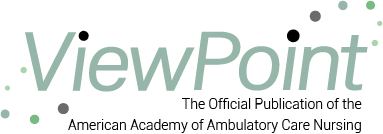Skip to main content

Manuscript Wish List
Diversity, Equity, & Inclusion
- Disability sensitivity/ableism (inclusion)
- Gender minorities in nursing (inclusion/diversity)
- Racial and ethnic biases or implicit bias in medicine/behavioral (equity)
- Strategic recruiting for diversity (diversity)
- The new 'frontier' nursing: bringing care to the migrant fields (equity)
- The impact of social policies (e.g., changes in abortion laws, transgender access to care) on equitable care (equity)
- Patient portals and the limited English proficiency (LEP) population (equity)
- Nurses with disabilities in the workplace (inclusion)
- Nurses with history of substance use disorder reintegration into the workplace (inclusion)
- Separating personal beliefs/preferences from nursing care and workplace dynamics (inclusion)
- Maximizing patient potential for those with a pre-existing disability (equity)
- Autism-sensitive care for pediatric or adult settings (inclusion/equity)
- Creating an inclusive workplace (inclusion)
- The limitations of standardized screenings with the LEP population: When direct translation doesn't suffice (equity)
- Gender dysphoria and its impact on population health (equity)
- Diverse staffing and its benefits for the workplace (diversity)
Quality and Safety
- Medications: safety, errors at clinic or at patient's home, immunizations, education, programs, etc.
- Documentation issues to support self-administered meds at home
- Workplace violence prevention
- Report cards (creation/utilization) – an opportunity for standard work and benchmarking, Ambulatory Harm Dashboards
- Risk management/quality measures, incident reporting, good catches, stopping harm before it reaches the patient
- Fall prevention in the clinical setting, possible NSI for adult and pediatrics
- Evidence (research) demonstrating the quality outcomes for APRN versus other providers, role or ratio of RN and measures of outcomes
Finance
- Reimbursement in ambulatory care, nurse visits in primary/specialty care
- Cost containment associated with nursing interventions (such as case management)
- Role of APRN in generating revenue (billing, reimbursement) and decreasing cost (through primary prevention strategies)
- Optimizing role, working to maximum of licensure, and impact on both patient care and business outcomes
- Magnet processes for ambulatory care, new requirements for ambulatory care exemplars
- Interprofessional teams, working with medical assistants and other roles, including understanding scope of practice
- Value of professional certification (ties in with Magnet changes)
- Clinical differences in care and cost outcomes between certified and non-certified nurses
- Expanded role for RN and full practice authority for APRN impact on patient care outcomes and business considerations (finance, legal, regulatory, compliance)
- CURES Act and its impact on clinical notes and test results Professional Development/Education
- Ambulatory care orientation and nurse residency programs, opportunities to incorporate the nurse residency program from AAACN
- Strategic partnerships with schools of nursing or high schools, efforts to increase diversity and retention in the nursing workforce
- Latest technology that augments care delivery, education, training, or self-management (for the clinician)
- Mentorship programs, roles and responsibilities of mentors
Chronic Care/Transitions
- Change/transition in ambulatory care (inpatient to outpatient, pediatrics to adult, acute care to long term care, etc.)
- Any programs or advancements in shared governance, self-directed care, and caregiver support resources
Ambulatory Care Structure/Leadership
- Administrative reporting structures in ambulatory care nursing leadership positions
- Strategic planning in ambulatory care
- Succession planning across the enterprise, from front-line to executive leadership roles
- Managing change/motivating staff, management skills to address underperforming staff
Disaster Planning
- Post-disaster deployment considerations for employment, personal, and professional life
- Exemplars of role changes related or secondary to pandemic, particularly with respect to those practices that will remain after the pandemic has resolved
Triage/Telehealth
- Telephone triage models, especially addressing challenges with triage across state lines
- Documentation and standardization of tools used, preferably expanding evidence base
- Telehealth issues - reimbursement, staff education, equipment (choices and optimal use)
Care Coordination
- Care coordination - competencies and best practices, increase in multidisciplinary clinics for coordination, documentation, and billing
- Evidence-based models of care coordination, current research, standardizing nurse sensitive indicators (NSI)
Miscellaneous Clinical Issues
- Disease management/population health – possible NSIs and awareness in insurance changes with population health and prevention
- Disruptive patient management/hostile work environment in ambulatory care, power dynamics
- Electronic medical records, patient portals, social media, and technology - constant evolution of technology and cyber safety

